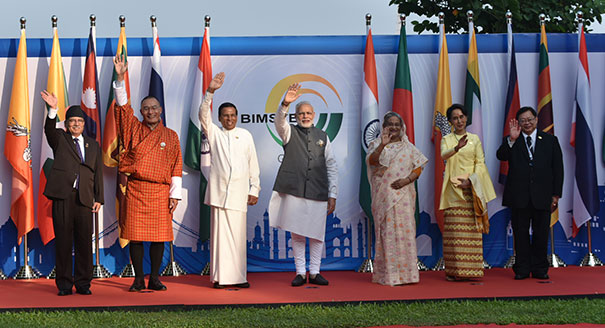- Courses
- GS Full Course 1 Year
- GS Full Course 2 Year
- GS Full Course 3 Year
- GS Full Course Till Selection
- Answer Alpha: Mains 2025 Mentorship
- MEP (Mains Enrichment Programme) Data, Facts
- Essay Target – 150+ Marks
- Online Program
- GS Recorded Course
- Polity
- Geography
- Economy
- Ancient, Medieval and Art & Culture AMAC
- Modern India, Post Independence & World History
- Environment
- Governance
- Science & Technology
- International Relations and Internal Security
- Disaster Management
- Ethics
- NCERT Current Affairs
- Indian Society and Social Issue
- NCERT- Science and Technology
- NCERT - Geography
- NCERT - Ancient History
- NCERT- World History
- NCERT Modern History
- CSAT
- 5 LAYERED ARJUNA Mentorship
- Public Administration Optional
- ABOUT US
- OUR TOPPERS
- TEST SERIES
- FREE STUDY MATERIAL
- VIDEOS
- CONTACT US
Bhargavastra – India’s 1st Indigenous Micro-Missile-Based Counter-Drone System
Bhargavastra – India’s 1st Indigenous Micro-Missile-Based Counter-Drone System

- Bhargavastra is India’s 1st indigenous counter-drone system specifically designed to neutralise individual drones and swarm drone threats using a multi-layered hard-kill mechanism.
- It is Developed by Solar Defence and Aerospace Ltd. (SDAL) in collaboration with Economic Explosives Ltd., a subsidiary of Solar Industries India Ltd.
- It is a low-cost, mobile, and modular solution intended to meet the modern battlefield requirements of the Indian Armed Forces.
Trials and Testing :
- Trials were conducted at the Seaward Firing Range, Gopalpur on May 13, 2025.
- A total of 3 trials were conducted:
- 2 single rocket launches.
- 1 salvo launch with two rockets fired within 2 seconds.
- All 4 rockets achieved designated launch and performance parameters.
Technical Features and Capabilities
Layered Defence Configuration
|
Layer |
Type |
Function |
|
First Layer |
Unguided micro-rockets |
Neutralises swarm drones using blast radius (~20 meters). |
|
Second Layer |
Guided micro-missiles |
Precision engagement of high-value or evasive targets. |
|
Optional Layer |
Soft-kill (jamming and spoofing) |
Disrupts drone communication and GPS-based navigation. |
Key Specifications
|
Parameter |
Capability |
|
Detection Range |
6 to 10 km (Radar) |
|
Engagement Range |
Over 2.5 km |
|
Simultaneous Fire |
Up to 64 micro-rockets or missiles |
|
Salvo Capability |
2 rockets in under 2 seconds |
|
Terrain Compatibility |
Deployable in high-altitude regions (> 5000 m) |
|
Modularity |
Configurable sensors (Radar, EO/IR, RF) and launchers |
|
C4I Integration |
Supports command and control with network-centric infrastructure |
|
Sensor Suite |
Electro-optical, infrared, and RF receivers for precise tracking |
Strategic Significance
- Designed and manufactured entirely in India, supporting the Make in India and Atmanirbhar Bharat initiatives.
- Addresses the lack of indigenous systems to counter modern drone swarm attacks.
- A low-cost alternative to conventional air defence systems; suitable for neutralising low-cost threats.
- Potential deployment across the Army, Air Force, and Navy.
- Export Potential: Open-architecture design and modularity make it adaptable for international markets.
what are Swarm Drones
- Swarm drones refer to multiple drones operating autonomously or semi-autonomously in a coordinated manner using artificial intelligence, real-time communication, and local sensing technologies.
- Threat Profile
- Can overwhelm traditional radar and missile systems.
- Capable of coordinated strikes, reconnaissance, and electronic disruption.
- Low radar cross-section makes detection challenging.
- Operational Examples
- Russia-Ukraine War: Used for surveillance and precision strikes.
- Nagorno-Karabakh Conflict: Employed for targeting artillery and tank positions.
Government Initiatives Promoting Drone Ecosystem
|
Initiative |
Objective |
|
Drone Rules, 2021 |
Liberalised regulatory framework for drone operations. |
|
Production Linked Incentive (PLI) Scheme |
₹120 crore allocated to promote domestic manufacturing of drones and components. |
|
Drone Shakti |
Promotes drone-as-a-service startups in sectors like agriculture and logistics. |
|
Kisan Drone Scheme |
Offers subsidies to farmers for the use of drones in agricultural applications. |
|
SVAMITVA Scheme |
Uses drones for mapping rural land parcels to improve property documentation. |
|
Namo Drone Didi |
Equips women-led self-help groups with drones for agricultural and rural services. |
Challenges and Considerations
- Scalability: Requires industrial-scale production to meet defence demand.
- Electronic Countermeasures: Adversaries may develop technologies resistant to jamming or spoofing.
- Cybersecurity: Ensuring protection of communication and command infrastructure.
- Operational Training: Effective deployment requires specialised operator training and battlefield integration.
- Global Competition: Competes with similar systems being developed in the US, China, and Turkey.
Way Forward
- Expand production and deployment across border areas and defence bases.
- Export to strategic partners in Asia and Africa.
- Integrate artificial intelligence for autonomous threat classification.
- Establish counter-drone training centres in the armed forces.
- Develop complementary systems using directed energy weapons for future integration.




